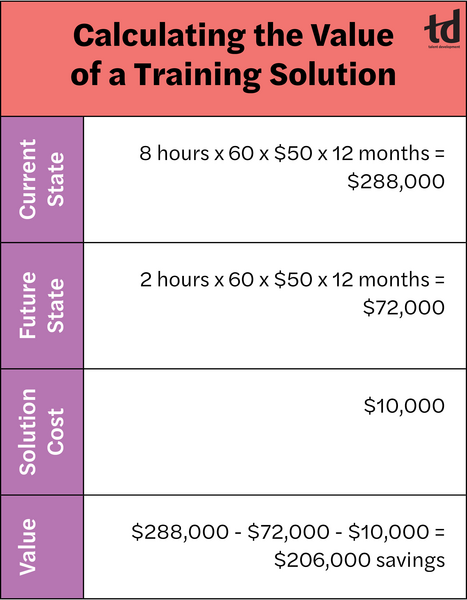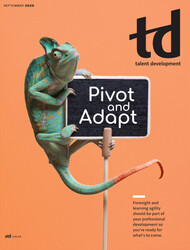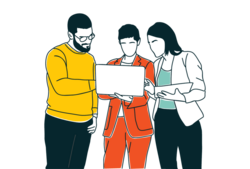TD Magazine Article
Pivot and Adapt
Foresight and learning agility should be part of your professional development so you’re ready for what’s to come.
Tue Sep 01 2020

Bookmark
Foresight and learning agility should be part of your professional development so you're ready for what's to come.
It's funny how it happens sometimes. Over time, you may have thought about going out on your own but haven't taken serious steps in that direction. Then you lose your job. At that point, you decide to open your own consultancy. It turns out the setback was the push you needed to take the leap. That's what happened to me.
I was working for a company that went bankrupt overnight during the dot-com bubble crash. I'd wanted to start my own business for some time, so a colleague from the now-defunct company and I both decided that the time had come. I'm not sure how long it would have taken me to get to that point if that unfortunate situation hadn't occurred.
Others I know have similar stories. Some are laid off, then take up a hobby—such as baking or writing—that turns into a new business. Some find new jobs in different industries that lead to greater job satisfaction than they had previously.
With all that's going on right now resulting from the coronavirus pandemic, this is one of those times. Note, however, that the world was already pushing employees hard for workforce changes before the pandemic. For example, McKinsey & Company predicted in 2017 that 14 percent of the global workforce will have to switch occupations or acquire new skills by 2030 as a result of automation and artificial intelligence. And according to the World Economic Forum's Future of Jobs Report 2018, by 2022, the core skills required to perform most roles will change by about 42 percent, requiring 101 days of upskilling.
The coronavirus pandemic has hastened this need for change. Who does what tasks, where, and when have been forced to change overnight. While many people are inclined to see all that as a bad thing, let's look at how to pivot for good.
How talent development is affected
If you're in a talent development or HR role, beyond the new policies and protections your team must create, you likely also need to define changing employee roles. Who can work remotely and who cannot? Who will be furloughed or laid off? And given changes in staffing levels, how do you reassign responsibilities to remaining staff? Given a reduction in force, perhaps your role is changing or going away.
Even though firms like McKinsey show that businesses can't afford to suspend capability building and despite research showing that all the companies that came out of previous recessions the strongest continued to invest in people during that time, some organizations have put TD on hold. I hope you don't work for one of those firms. But if you do, then leverage the research to help convince leadership to change their perspective on the importance of investing in their people.
If you're lucky enough to be working in an organization that understands the critical importance of TD right now, there are still many things that have changed:
Anyone involved in classroom delivery—including in-house or outsourced facilitators, coordinators, material production, or facility management—will have to find a new way to add value.
Those involved in managing learning programs for which classroom or other live events were a large part will have to quickly find a replacement method of providing skill building.
If you haven't been an advocate of self-directed learning in the flow of work (informal learning), you need to change your mindset and get up to speed, because that is likely to be an increasing share of your offerings.
In fact, what the pandemic has brought to light is the importance of foresight to TD personnel. Many of the changes that TD departments need to make now are changes that they could and should have anticipated. But often we get stuck in our old ways, and if it's not broken, we don't fix it. We see others using new methods, but we choose not to implement them. Or our leaders don't support the changes we suggest they need to make. They think if employees are not in a classroom, they're not learning.
No one knows what the environment has in store, but with foresight, you can be ready. How do you obtain foresight? With learning agility.
The importance of learning agility in a changing environment
Sometimes in TD, we put all our energy into developing others' skills, but we forget to focus on ourselves. I have a colleague who said her team was committed in 2019 to developing new L&D skills to take advantage of new strategies and techniques but then "never had the time" to do so. And now, they are scrambling to adapt to the new normal.
With the speed of change, the most important skill workers can develop is learning agility—the ability to learn how to learn. It is the secret to success in any role.
Learning agility enables you to constantly develop, challenge the status quo, and deal with increasingly complex problems. As volatility, uncertainty, complexity, and ambiguity permeate the environment, the ability to learn how to learn ensures that you can discard outdated ideas and skills and quickly learn new ones that are more relevant. It provides flexibility and adaptability to change.
Peter Drucker said, "We now accept the fact that learning is a lifelong process of keeping abreast of change. And the most pressing task is to teach people how to learn."
As you begin your quest for foresight, don't restrict your learning to TD. Use this time to become customer focused. Learn about your organization's industry, customers, technologies, and solutions. What knowledge or skills will they need in the future so you can anticipate and recommend them? What new issues or legislation may affect them? For example:
When new privacy regulations, such as General Data Protection Regulation, are on the horizon, how will they affect your industry, your services, and the way you go to market?
If the industry is adopting new tools or technologies, what are they? How can you be ready for them?
If you sell to the life sciences industry and the federal Food and Drug Administration is planning new regulations about product testing, how will that affect your customers?
If your organization sells household products, how is the Internet of Things going to affect product features and market expectations?
To develop learning agility, you must first commit to it and make development a habit. It may seem strange to think that TD professionals find it difficult to make that commitment, but it's common. Many are willing to drive others' development but won't invest in their own development. However, if you commit to your own learning agility, you'll find it far easier to drive that commitment in the organization. It's like a magic switch that helps you motivate others to embrace a culture of learning. But it starts from within.
Your development habit may be reading the latest industry blog posts and newsletters for one hour per week. And once a month, you take advantage of a skill practice, which is when you follow steps to apply new knowledge to what you do on the job. A skill practice is how you teach yourself the abilities you need and apply them to something real, learn lessons, and then apply it again.
There's a great quote from The Expertise Economy that says, "Developing your employees' skills at a rate equivalent to the rate of changes is the key to a sustainable competitive advantage. We need people who have the latest skills and who build new ones quickly." That's learning agility. And developing your skills at the rate of change is the key to your professional competitive advantage.
A development habit is like a learning treadmill; you don't have to run to maintain your skills—you just have to walk at a steady pace to keep moving forward. But if you stop, you'll fall off.
Steps to pivot if you're working
Beyond building your learning agility, you can make a pivot for good by examining the stretch assignments you've been forced to take on. List the new skills you're using or developing. For example:
Redesigning jobs
Converting classroom training to the virtual classroom
Converting static content to experiential learning
Learning curation to fill content gaps
Are those activities you enjoy? Would you prefer to keep doing them after the pandemic ends? How can you shape your current role to include those activities or make a career move to a different role? If it's a career change you want to pursue, take advantage of a competency assessment to identify whether you have the other skills needed for that role, and if not, take steps to start closing those skills gaps.
As you develop learning agility and foresight, what ideas and trends should your company embrace to position it for future success? For example, if you recognize that you need to develop data analysis skills and systems thinking because they are skills of the future, why wouldn't others in the organization also need those skills? Where could agile methodologies make an impact?
If leaders agree, how can you support those efforts? What business case could you prepare to convince them? If you don't know how to build a business case, here's a perfect opportunity to learn.
Let's say you realize that systems thinking may help people learn how to solve business problems in a new way by looking upstream and downstream for better alternatives. You identify some resources for learning systems thinking and outline experiential learning where employees could apply it on the job. You document the cost of those resources and the hours required (and associated dollars based on hourly rate) to prepare and market the content. That's your solution cost. Consider an estimate of $10,000.
Now you need to find the situation that needs improving. Find a process problem resulting from departments not working well together that systems thinking can solve. Manufacturing is an easy place to look because design, production, supply chain, and service don't always coordinate. For example, a product takes eight hours to service because the product design makes disassembly difficult. If it weren't so difficult, it would require only two hours to service. You learn that employees perform the service 60 times each month at the hourly rate of $50 per hour.
Plug in those numbers for your business case. The current state is the current cost of performing the service annually. The future state is what it would cost if the problem were solved. Subtract the future state and the solution cost from the current state, and you get the value of your solution (see figure).
That example is simplistic, and it doesn't take into consideration any redesign costs, but it's a good example of the power of systems thinking. If you go to a leader and say, "I'd like to spend $10,000 on a program that could save $206,000 annually—and that's just one place I know about because the program can reduce costs across the business," what do you think the leader will say?

Steps to pivot if you're not working
If you're currently unemployed, you need to put yourself in a position to be ready for the next opportunity—not just any job but the right job. Maybe that includes going out on your own. Take time to examine new ways work gets done, and be ready with skills needed when the recovery begins.
Use competency models and assessments to examine your existing capabilities. What new or changed roles align with your strengths? That is where the foresight mentioned earlier is so important.
Ask yourself, "Where can I find my greatest contribution?" That is, rather than focus on your passion, focus on where you can add the most value given the changing environment. That's where you may find that going off on your own is the best solution.
Make a list of potential role fits, even if they include a job that doesn't exist. Who says you can't create your own? For each job:
Identify which of your relevant strengths you can promote and leverage.
Identify what skills gaps you need to close.
Create a 30-second elevator pitch that explains why you want that job and why you would be a good fit.
If you can't do those things easily, you have work to do.
Next, for the top three to five roles you seek, build an action plan that includes:
What materials or stories you're going to prepare that demonstrate your relevant strengths
The specific activities you will pursue to close your skills gaps and a timeline for executing them (the activities must be experiential and should result in artifacts that prove you've learned the skills)
How you will demonstrate your foresight in interviews (about your role and the organization), such as actionable steps to help the company pivot
If you walk into a job interview with the ability to demonstrate your capabilities, learning agility, and vision for how you'll help the company, you will differentiate yourself and give yourself the best chance for the role you want.
The moment is now
Regardless of your employment situation, you can capitalize on these unique times. Everything about work is changing: what, how, and where it is done. But if you use this as an opportunity to align your capabilities—where you can add the most value and what you enjoy—then you can use the pandemic to pivot for good.
Skills to Develop That Prepare You for Any Role
Beyond learning agility, other skills of the future—such as critical thinking, creativity, flexibility, problem solving, and emotional intelligence—are increasing in importance. Those soft skills are valuable because they will outlast technical developments, and automation, digitization, and artificial intelligence can't replace them.
Soft skills are the differentiator between the person who can do the job and the person who can do the job with a level of excellence that ensures both their personal success and their ability to contribute to an employer's mission. You can't learn those skills from e-learning or a video alone. They require doing—skill practice on the job. For some guidance on creating opportunities for you to transfer learning, check out the ATD webcast titled How to Convert Existing Content into Competency-Based Experiential Learning.
And because where people work is changing, ensure you have digital fluency, including proficiency in key technologies you need to be productive and collaborate with others anywhere. That includes videoconferencing technology, application and content-sharing tools (Office 365, Google applications), virtual team tools (Trello, Slack), instant message applications and protocols for their use, and other enterprise applications (customer relationship management, enterprise resource planning).

More from ATD


